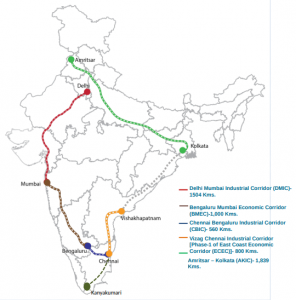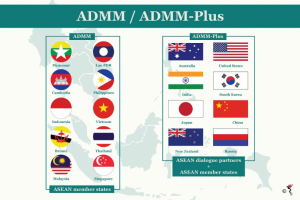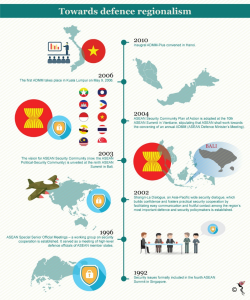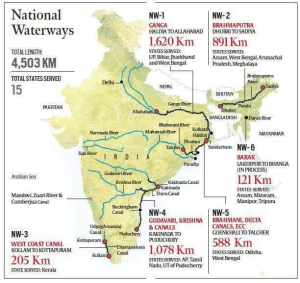Topics
- Ordnance Factory Board
- Industrial corridor and ADB
- Fertiliser Subsidy
- ASEAN Plus Defence ministers meet
- Judiciary and Technology
- Inland Vessels Bill
- Ordnance Factory Board
#GS3 Internal security #Defence #PSUs #Indigenisation
Context: Recently, the Union Cabinet approved a plan to corporatize the Ordnance Factory Board (OFB).
Key Details:
- The decision to corporatize the Ordnance Factory Board which controls the 41 ordnance factories was announced in 2020 by Union Finance Minister as part of a package to make India self-reliant in defence hardware production.
- The board will now be split into seven new Defence public sector entities 100% owned by the government that will produce ammunition and explosives, vehicles, weapons and equipment, troop comfort items, opto-electronics gear, parachutes and ancillary products, the person cited above said.
- All OFB employees in the production units will be transferred to the new corporate entities on a deemed deputation initially for a period of two years without altering their service conditions as central government employees.
- Pension liabilities of the retirees and existing employees will continue to be borne by the government.
- An empowered group of ministers (EGoM), constituted under the defence minister Rajnath Singh last year, will oversee the board’s corporatisation and also take decisions on related matters.
Reason behind restructuring:
- There have been complaints from the defence forces that the quality of products manufactured by the OFB were
- News reports had last year said that the Indian army in an internal assessment had flagged concerns about faulty ammunition and armaments supplied by the OFB causing casualties and causing wastage of public finances.
- AS per the assessment, some 403 accidents over the previous six years resulted in the deaths of 27 soldiers and a loss of ?960 crores to the exchequer.
- The Comptroller and Auditor General had repeatedly raised questions about the quality of products supplied by the OFB and its overall performance in its reports.
Significance of the move:
- The new structure will help overcome various shortcomings in the existing OFB set-up by eliminating inefficient supply chains and provide these companies incentive to become competitive.
- It will boost their autonomy.
- The restructuring will transform the ordnance factories into productive and profitable assets, deepen product specialisation, boost performance and improve quality, cost efficiency and accountability
- This move is being seen as a major move towards achieving self-reliance in defence manufacturing.
- It is expected that seven new professionally-managed entities will increase their share in the domestic market as well as tap new export opportunities.
Apprehensions:
- One of the main apprehensions of the employees is that corporatisation (ownership and management lies with the government) would eventually lead to privatisation (transfer of ownership and management rights to the private player).
- The new corporate entities would not be able to survive the unique market environment of defence products that has very unstable demand and supply dynamics.
- Restructuring will result in greater autonomy and lesser government control over the corporation but there is a fear of job loss.
Ordnance Factory Board:
- It is an umbrella body for the ordnance factories and related institutions, and is currently a subordinate office of the Ministry of Defence (MoD).
- OFB is the world’s largest government-operated production organisation, and the oldest organisation in India.
- The first Indian ordnance factory was set up in the year 1712 by the Dutch Company as a GunPowder Factory, West Bengal.
- It is a conglomerate of 41 factories, 9 training Institutes, 3 regional marketing centres and 5 regional controllers of safety.
- Headquarters: Kolkata
- Significance: A major chunk of the weapon, ammunition and supplies for not just armed forces but also paramilitary and police forces comes from the OFB-run factories.
- Ordnance factories currently manufacture tanks, armoured personnel carriers, mine protected vehicles, bombs, rockets, artillery guns, anti-aircraft guns, parachutes, small arms, clothing and leather equipment for soldiers.
- Industrial corridor and ADB
#GS3 #Infrastructure #Economiccorridors #International organisations
Context: Recently, the Asian Development Bank (ADB) and Government of India signed a $484 million loan to improve transport connectivity and road maintenance in the Chennai-Kanyakumari Industrial Corridor (CKIC) in Tamil Nadu.
Key Details:
- The loan is in line with Strategy 2030, ADB’s long-term corporate strategy, the project emphasises sustainability, climate change resilience, and road safety elements.
- Under Strategy 2030, ADB will expand its vision to achieve a prosperous, inclusive, resilient, and sustainable Asia and the Pacific, while sustaining its efforts to eradicate extreme poverty.
- Climate change adaptation measures will be incorporated in the upgrades, including improved drainage, raised road embankments in critical sections, and resizing of bridges and culverts.
- The project will strengthen road safety programmes through advanced technologies for monitoring. In addition, project will support improved planning capacity of the State Highways and Minor Ports Department.
- The project, which is likely to generate more than 4.7 million additional jobs driven by annual manufacturing output of $222 billion, is taking shape with the State strengthening the power infrastructure and resolving constraints in evacuation of renewable energy from districts in the southern CKIC.
- The project will upgrade about 590 kilometers of State highways in the CKIC influence areas.
- CKIC is part of India’s East Coast Economic Corridor (ECEC).
East Coast Economic Corridor:
- It stretches from West Bengal to Tamil Nadu and connects India to the production networks of South, Southeast, and East Asia.
- ADB is the lead partner of the Government of India in developing ECEC.
- It covers West Bengal, Odisha, Andhra Pradesh and Tamil Nadu. Vizag to Chennai segment of this Corridor has been taken as phase-1.
- Vizag-Chennai Industrial Corridor (VCIC) is the first coastal economic corridor in the country.
- It is aligned with the Golden Quadrilateral. It also plays a critical role in the “Act East Policy” of India.
- The Golden Quadrilateral is the longest road project in India and the fifth-longest highway in the world. It connects Delhi, Mumbai, Kolkata and Chennai.
Industrial Corridors Scheme:
- An industrial corridor is basically a corridor consisting of multi-modal transport services that would pass through the states as main arteries.
- Industrial corridors offer effective integration between industry and infrastructure, leading to overall economic and social development.
- In 2019, the government approved the development of the five industrial corridor projects, being implemented through National Industrial Corridor Development and Implementation Trust (NICDIT).
- NICDIT is an apex body under the administrative control of the Department for Promotion of Industry and Internal Trade (DPIIT), Ministry of Commerce and Industry.
- Industrial corridors constitute world-class infrastructure, such as:
- High-speed transportation network – rail and road.
- Ports with state-of-the-art cargo handling equipment.
- Modern airports.
- Special economic regions/industrial areas.
- Logistic parks/transhipment hubs.
- Knowledge parks focused on catering to industrial needs.
- Complementary infrastructure such as townships/real estate.
- Five Industrial Corridor Projects:
- Delhi Mumbai Industrial Corridor (DMIC).
- Amritsar Kolkata Industrial Corridor (AKIC).
- Chennai Bangalore Industrial Corridor (CBIC).
- East Coast Economic Corridor (ECEC) with Vizag Chennai Industrial Corridor (VCIC).
- Bangalore Mumbai Industrial Corridor (BMIC).

- Fertiliser Subsidy
#GS3 #Subsidies #fiscal policy
Context: The Cabinet Committee on Economic Affairs has approved the proposal to hike subsidy rates for phosphorus and potassium-based fertilizers by 140%.
Key Details:
- The move is aimed at providing relief to farmers from surge in global prices of commodities as the Kharif sowing season begins.
- It is a one-time measure as part of COVID-19 relief.
- The government will now offer a subsidy of Rs1,200 a bag of NPK fertiliser compared with the Rs500 being offered so far.
- The estimated additional subsidy burden for such an arrangement will be around Rs 14,775 crore.
- A similar hike was announced for diammonium phosphate or DAP fertiliser last month.
What is Di-Ammonium Phosphate (DAP) and why is it important for farmers?
- DAP is the second most commonly used fertiliser in India, with its sales of 119.13 lakh tonnes (lt) in 2020-21 next only to the 350.42 lt of urea.
- Farmers normally apply this fertiliser just before or at the time of sowing, as it is high in phosphorus (P) that stimulates root establishment and development – without which plants cannot grow to their normal size or will take too long to mature.
- DAP contains 46% P and 18% nitrogen (N). While there are also other phosphatic fertilisers – single super phosphate (SSP), for instance, has 16% P and 11% sulphur (S) – DAP is the farmer’s preferred choice.
- This is similar to urea and muriate of potash (MOP), which again have very high N and potassium (K) content of 46% and 60%, respectively.
Fertiliser Subsidy:
- Farmers buy fertilisers at Maximum Retail Prices (MRP) below their normal supply-and-demand-based market rates or what it costs to produce/import them.
- For example, the MRP of neem-coated urea is fixed by the government at Rs. 5,922.22 per tonne, whereas its average cost-plus price payable to domestic manufacturers and importers comes to around Rs. 17,000 and Rs. 23,000 per tonne, respectively.
- The difference, which varies according to plant-wise production cost and import price, is footed by the Centre as subsidy, which goes to the companies.
- The MRPs of non-urea fertilisers are decontrolled or fixed by the companies. However, the Centre pays a flat per-tonne subsidy on these nutrients to ensure reasonable prices.
- The per-tonne subsidy ranges from Rs. 10,231 to Rs. 24,000 for different types of fertilisers.
- Decontrolled fertilisers retail way above urea, as they attract lower subsidy.
About Nutrient-Based Subsidy (NBS) Regime:
- Under the NBS regime – fertilizers are provided to the farmers at the subsidized rates based on the nutrients (N, P, K & S) contained in these fertilizers.
- Also, the fertilizers which are fortified with secondary and micronutrients such as molybdenum (Mo) and zinc are given additional subsidy.
- The subsidy on Phosphatic and Potassic (P&K) fertilizers is announced by the Government on an annual basis for each nutrient on a per kg basis – which are determined taking into account the international and domestic prices of P&K fertilizers, exchange rate, inventory level in the country etc.
- NBS policy intends to increase the consumption of P&K fertilizers so that optimum balance (N:P:K= 4:2:1) of NPK fertilization is achieved.
- This would improve soil health and as a result the yield from the crops would increase, resulting in enhanced income to the farmers.
- Also, as the government expects rational use of fertilizers, this would also ease off the burden of fertilizer subsidy.
- It is being implemented from April 2010 by the Department of Fertilizers, Ministry of Chemicals & Fertilizers.
Implications of Increasing the Subsidy on DAP:
- As farmers will start sowing operations for Kharif Crops, it is highly important for them to get the fertilisers at subsidised rate so as to keep inflation at check.
- Politically, too, to turn down the farmer protests, during the time of the Covid’s second wave, is the last thing the government would want.
4.ASEAN Plus Defence ministers meet
Context: Recently, the defence minister addressed the 8th ASEAN Defence Ministers Meeting (ADMM) Plus.
Key Points:
- It is being hosted by Brunei as it is the chair of the ASEAN grouping this year.
- In its address, India called for an open and inclusive order in Indo-Pacific based upon respect for sovereignty and territorial integrity of nations.
- As a founding member of the Heads of Asian Coast Guard Agencies Meeting (HACGAM), India seeks to enhance capacity building through collaboration in the areas of Maritime Search & Rescue.
(HACGAM is an apex level forum facilitating the congregation of all the major Coast Guard Agencies of the Asian region, it was established in 2004).
- It also called for peaceful resolution of disputed through dialogue and adherence to international rules and laws.
- India reiterated its support for freedom of navigation, overflight, and unimpeded commerce in the international waterways including the South China Sea, India hopes that the Code of Conduct negotiations (for South China Sea) will lead to outcomes that are in keeping with international law, including the United Nations Convention on the Law of the Sea (UNCLOS).
- The South China Sea is a major point of dispute between China and the US. Washington has rejected Beijing’s territorial claims over the resource-rich waters. China, in recent years, has increased its military presence in the South China Sea)
- Recently, ASEAN and China agreed to expedite the resumption of negotiations on the code, which were halted by the pandemic.
- China and ASEAN started negotiations in 2013 on a supposedly binding code of conduct.
- India shares a deep connection with ASEAN and has continued its active engagement in many areas contributing to regional peace and stability, particularly through ASEAN led mechanisms, such as:
East Asia Summit.
ASEAN Regional Forum.
ADMM-Plus.
- The India-ASEAN strategic partnership has been strengthened by virtue of flourishing cultural and civilisational links and enhanced people-to-people cooperation.
About ADMM- Plus:
- Consistent with the ADMM guiding principles of open and outward looking, the 2nd ADMM in Singapore in 2007 adopted the Concept Paper to establish the ADMM-Plus.
- The ADMM-Plus is a platform for ASEAN and its eight Dialogue Partners to strengthen security and defence cooperation for peace, stability, and development in the region.
- Eight Dialogue Partners are Australia, China, India, Japan, New Zealand, Republic of Korea, Russia and the USA (collectively referred to as the “Plus Countries”).
- It aims to promote mutual trust and confidence between defence establishments through greater dialogue and transparency.
- Agreed five areas of practical cooperation under this mechanism are:
- Maritime security
- Counter-terrorism
- Humanitarian assistance and disaster relief
- Peacekeeping operations and military medicine.
- In 2013, a new priority area of humanitarian mine action was agreed.


- Judiciary and Technology
#GS2 #Judicial administration reforms #Responsible Artificial Intelligence
Context: SUPACE (Supreme Court Portal for Assistance in Courts Efficiency) recently. The idea is to leverage machine learning to deal with huge chunks of case data for Assistance in Court’s Efficiency.
- The SUPACE follows the launch of the Supreme Court Vidhik Anuvaad Software (SUVAS), an Machine Learning(ML) tool for translating Supreme Court judgments into vernacular languages.
- Earlier, the E-Courts Project was conceptualised on the basis of “National Policy and Action Plan for Implementation of Information and Communication Technology (ICT) in the Indian Judiciary – 2005” submitted by the e-Committee of the Supreme Court.
What is SUPACE?
- It is an Artificial Intelligence(AI) based tool that collects relevant facts and laws and makes them available to a judge.
- It will produce results customized to the need of the case and the way the judge thinks.
- It is not designed to take decisions, but only to process facts and to make them available to judges looking for an input for a decision.
- Initially, it will be used on an experimental basis by the judges of Bombay and Delhi High Courts who deal with criminal matters.
Other Potential Applications of AI in Judiciary:
- Task-specific, narrowly tailored algorithms, trained through machine learning, can be deployed to automate administrative functions like scheduling hearings and creating causelists etc.
- Similarly, other procedural tasks which can benefit from the use of AI include interventions at the level of smart e-filing, intelligent filtering/prioritisation of cases or notifications and tracking of cases.
- AI tools can aid in augmenting of decision-making processes where computational tools can be used to expedite justice delivery such as those for traffic challans and motor vehicle compensation claims.
Benefits of integrating AI & ML in Justice delivery:
- Increases Speed: AI powered tools like SUPACE will not only help organise cases, it will also bring references into the judgment at a speed not seen so far.
- Improves Efficiency: It will make the service delivery mechanism transparent and cost-efficient.
- Lowers Pendency: This will be time saving. It will help the judiciary and the court in reducing delays and pendency of cases.
- Strengthens Right of access to Justice: AI will present a more streamlined, cost effective and time bound means to the fundamental right of access to justice.
Global counterparts
- The criminal justice system of the US uses algorithms to estimate the risks of recidivism. Risk assessment tools help judges with information on pre-trial bail, sentencing and parole. Many courts in the country are also actively embracing online dispute resolution (ODR) initiatives.
- The most popular and widely used risk assessment tools used in the US justice system are Correctional Offender Management Profiling for Alternative Sanctions (COMPAS) and Public Safety Assessment (PSA).
- Estonia has introduced an e-residency programme and a national ID smart-card. The Estonian Ministry of Justice has also requested Estonia’s chief data officer to design a robot judge to preside over small claims, disputes of less than 7,000 euros etc.
- Unsurprisingly, China has also been adopting AI in the judiciary. The country reportedly has more than 100 robots in courts to recover case histories.
Precaution to be taken while using AI for Justice delivery:
- The ethical and responsible use of AI and ML for the advancement of efficiency enhancing can be increasingly embedded in legal and judicial processes.
- AI powered tools help aid access to material, but should remain non-intrusive when it comes to decision making.
- AI and ML should assist but do not replace human decision making.
- The relevance of AI in justice delivery will be dependent on the availability of clear and well-labelled data sets. Thus humans have to be kept in loop to create robust necessary labelled data sets.
- Since AI powered tools is intended to do what the human mind can do, but much more efficiently and methodically, there is apprehension of job losses which authorities needs to take care of.
E-Courts Project:
- It was conceptualized with a vision to transform the Indian Judiciary by ICT (Information and Communication Technology) enablement of Courts.
- It is a pan-India Project, monitored and funded by the Department of Justice, Ministry of Law and Justice, for the District Courts across the country.
- Objectives of the Project:
- To provide efficient & time-bound citizen-centric services delivery.
- To develop, install & implement decision support systems in courts.
- To automate the processes to provide transparency and accessibility of information to its stakeholders.
- To enhance judicial productivity, both qualitatively & quantitatively, to make the justice delivery system affordable, accessible, cost-effective, predictable, reliable and transparent.
- Inland Vessels Bill
#GS3 #Infrastructure #Waterways
Context: The Union Cabinet has given the nod to the Inland Vessels Bill, 2021, which will replace the Inland Vessels Act, 1917.
Highlights of the bill:
- Draft Inland Vessels bill proposes to streamline and regulate how vessels travel in the inland water fields of India.
- A total of 4,000 km inland waterways have been operationalized.
- The Bill will regulate the safety, security and registration of inland vessels.
- A key feature of the Bill is a unified law for the entire country, instead of separate rules framed by the States.
- The certificate of registration granted under the proposed law will be deemed to be valid in all States and Union Territories, and there will be no need to seek separate permissions from the States.
- The Bill provides for a central database for recording the details of the vessel, vessel registration and the crew on an electronic portal.
- It requires all mechanically propelled vessels to be mandatorily registered.
- All non-mechanically propelled vessels will also have to be enrolled at the district, taluk or panchayat or village level.
- It enlarges the definition of ‘inland waters’, by including tidal water limit and national waterways declared by the Central Government.
- It also deals with pollution control measures of Inland Vessels. This bill directs the Central Government to designate a list of chemicals, substances, etc. as pollutants.
Inland Water Transport (IWT) in India:
- India has about 14,500 km of navigable waterways which comprise of rivers, canals, backwaters, creeks, etc.
- IWT is a fuel-efficient and environment-friendly mode.
- As per the National Waterways Act 2016, 111 waterways have been declared as National Waterways (NWs).
- The Inland Waterways Authority of India (IWAI) is implementing the Jal Marg Vikas Project (JMVP) at an estimated cost of ?18 crores for capacity augmentation of navigation on the Haldia-Varanasi stretch of Ganga (part of NW-1) with the technical and financial assistance of the World Bank.
Important National waterways India

Courses we offer
UPSC Civil Services Coaching ( We are the best top rated IAS Academy in Vijayawada and Andhra Pradesh by Times of India Excellence award)
Degree with IAS (BA and BSc plus UPSC Coaching)
Inter with IAS (Sarat Chandra Junior College provides intermediate plus UPSC Coaching with HEC, MEC, CEC along with CLAT, IIT HSEE, IPMAT)
